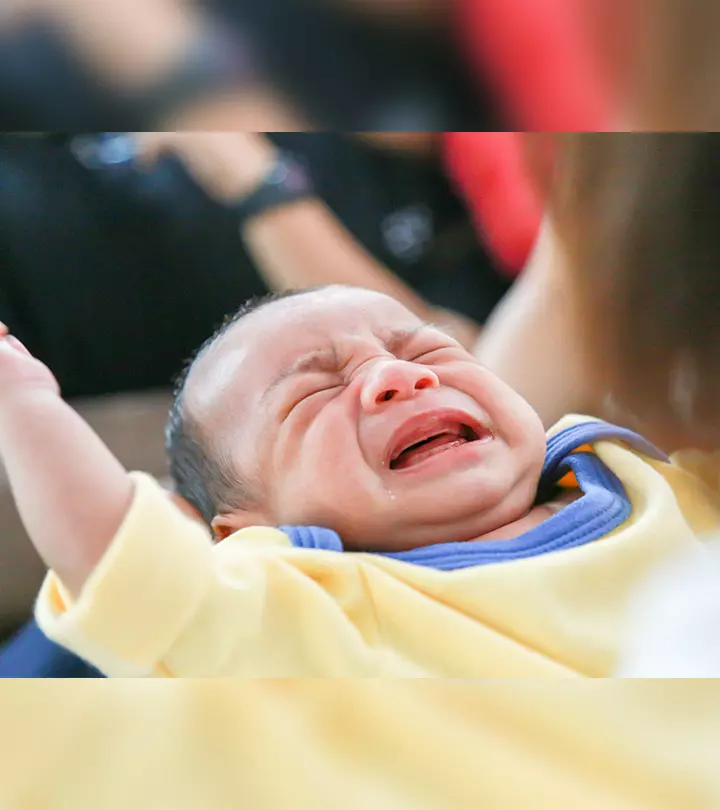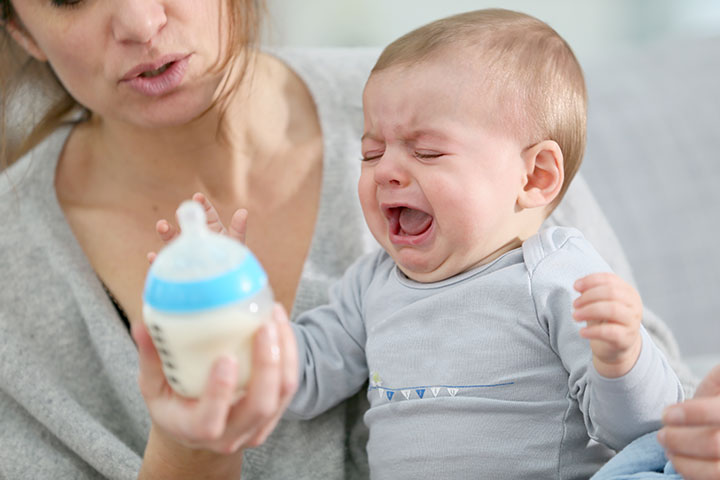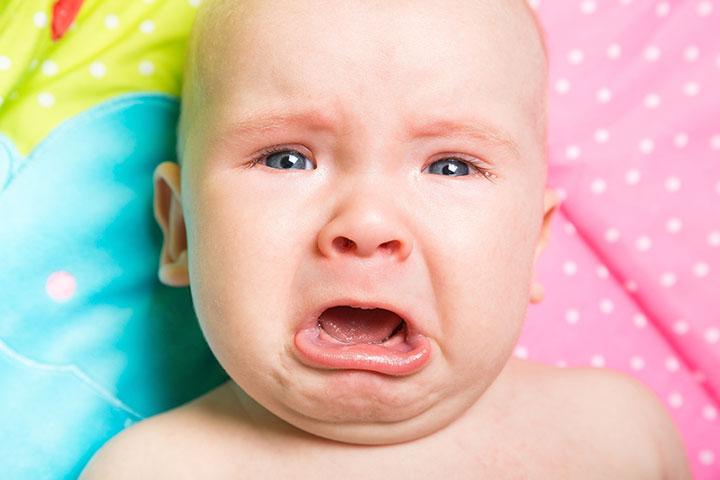
Image: Shutterstock
If you have a baby at home or have been around one, you’ll know that babies and crying go hand in hand. There might be many reasons for it – hunger, boredom, or a soiled diaper. And often, babies easily calm down once they feed. However, a mother is bound to get concerned if her baby cries after every feeding session. Because it is something that is supposed to calm the baby down instead of being a root cause of it. A baby might cry after feeding due to many reasons including illness. Here we discuss some of the possible reasons a baby cries after feeding:
Colic
If your baby cries for long hours after feeding for seemingly no apparent reason, then it could be colic. It usually occurs in infants after a few weeks of birth and can go on up to 3 – 4 months of age (1). The primary symptom of colic is long bouts of crying despite no other signs or symptoms of illness or discomfort. Colic is usually believed to occur at a particular time during the day (2). If it happens to be after feeding for your baby, then so it will be every day.
Although the exact reason for colic is unknown, most experts suggest that it could be caused by indigestion or wind. Some even believe that the infant’s immature gut might be sensitive to some substances present in the breast milk or formula milk. However, there is no supporting evidence for any of the theories (3).
Though colic might cause intense bouts of crying in your baby, it is neither harmful nor dangerous (4). In fact, the doctor might conduct a physical exam only to rule out the possibility of other illnesses or underlying diseases. If no such thing is detected, then the baby will be diagnosed with colic (5). Since it is normal for all infants up to the age of 3 – 4 months, a medicated treatment is not recommended for colic (6). Simple measures such as gentle tummy massages and regular burping after feeding might help.
Gastroesophageal Reflux Disease (GERD)
Infants usually spit up milk after feeding, which is quite normal. This is also known as gastroesophageal reflux (GER) and occurs when the contents from the stomach of the infant wash back into the food pipe. But it is generally not a cause of concern. However, a more severe condition called gastroesophageal reflux disease (GERD) might cause a lot of distress to the infant (7).
Some of the symptoms of GERD in your infant could be poor weight gain, lengthy feedings, vomiting, distress, excessive crying, etc. If your baby shows these symptoms, visit the doctor immediately (8).
For general GER symptoms, simple corrective measures can help relieve distress. Reducing feed volume, feeding small but frequent amounts, burping in between feeding, etc., can all help in reducing spit-ups or gastroesophageal reflux in babies. You can also put the baby on the tummy or on the left side while awake after feeding for a short while. However, while sleeping, make sure you always lay the baby on their back (9).
Gas
Gas is a harmless condition in babies. But it can surprise you since the baby might cry a lot even though your baby might not be hungry (10). When tiny bubbles form in their intestine or stomach, it can cause pressure and pain too. A majority of the babies might not be bothered by gas. However, some babies become restless during sleep until they pass it. Whereas some might cry for long hours due to the pain and discomfort. However, it is rarely a cause of concern (11).
Home remedies such as moving your baby’s legs in a cycling motion, tummy time, burping, or even massaging the belly can help relieve the trapped gas (12).
These are the most common reasons why your baby might cry after feeding. Some of them usually disappear on their own in a few months’ time. However, if your baby shows severe signs of distress, doesn’t sleep or is not feeding well and is losing weight, then see your doctor immediately.















